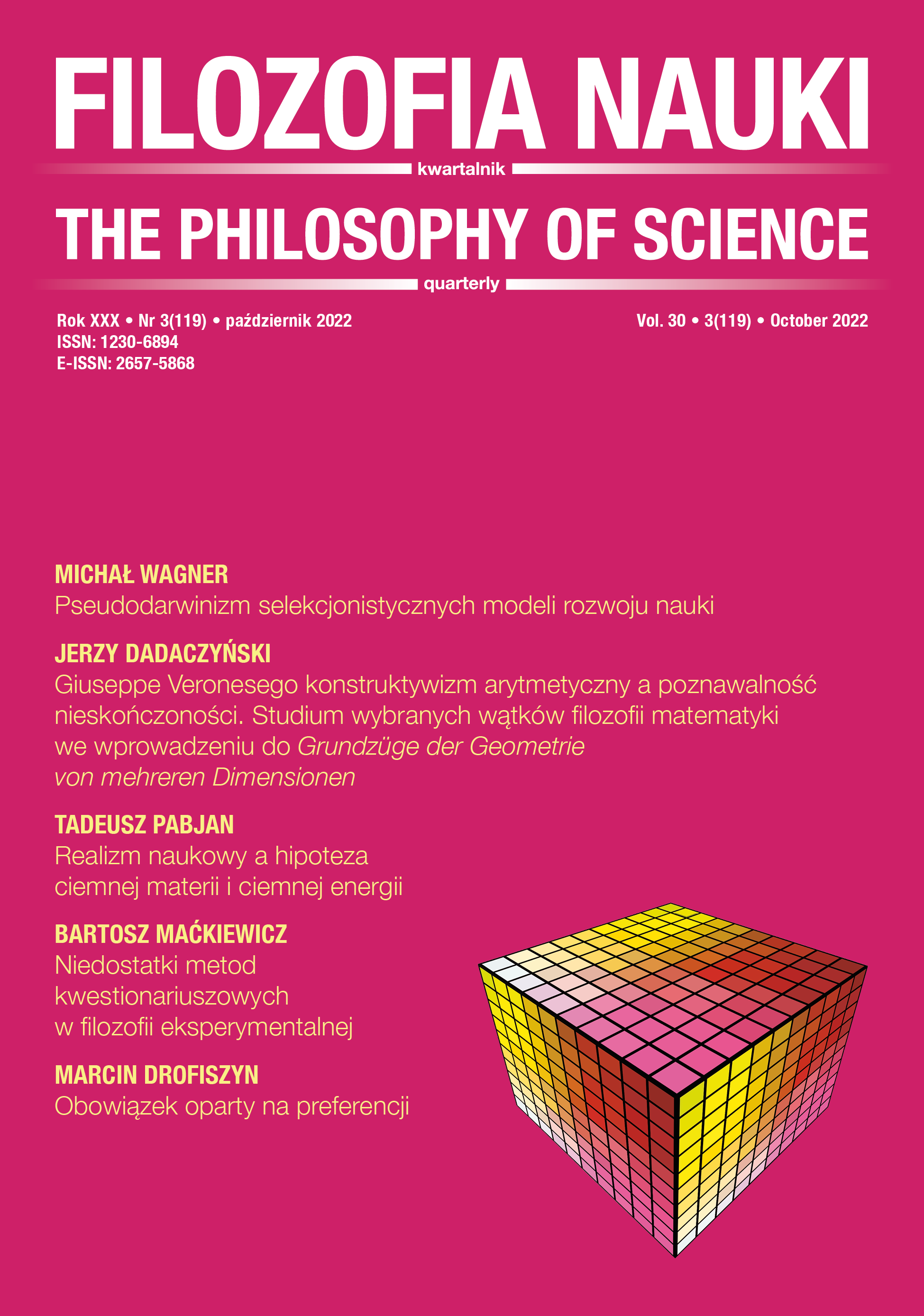Giuseppe Veronese’s Arithmetical Constructivism and the Cognizability of Infinity: A Study of Selected Aspects of the Philosophy of Mathematics in the Introduction to Grundzüge der Geometrie von mehreren Dimensionen
DOI:
https://doi.org/10.14394/filnau.2022.0027Keywords:
Giuseppe Veronese, constructivism, natural numbers, infinity, infinite sequences, cognizabilityAbstract
In the first part of the article, Giuseppe Veronese’s concept of arithmetical constructivism is reconstructed from his dispersed remarks. It is pointed out that although for Veronese time is a necessary condition for the construction of natural numbers by an individual subject and the subject cognizes time in an a priori way, it is not a (proto-)intuition of the subject. This is a fundamental difference between the concept proposed by Veronese and the constructivism of Kant and Brouwer. Veronese’s justification of the subject’s ability to cognize infinity, represented in his text by infinite sequences, is analyzed in the second part of the paper. The only condition for the cognition of the infinite sequence is to have a rule according to which its successive terms “follow one another.” The price of the ability to cognize the infinitive “whole” (sequence) may be the uncognizability of certain “parts” (terms of sequence). Infinite sequences, cognizable according to Veronese, are allowed as objects of mathematical research, although they do not meet the condition of constructability.
References
Błaszczyk P. (2013), Nota o rozprawie Otto Höldera „Die Axiome der Quantität und die Lehre vom Mass”, „Annales Universitatis Paedagogiae Cracoviensis Studia ad Didacticam Mathematicae Pertinentia” 141(5), 129-142.
Bourbaki N. (1947), Théorie de la mesure et de l’intégration. Introduction, Nancy: Université Henri Poincaré.
Dadaczyński J. (2013), Giuseppe Veronesego podstawy matematyki, „Zagadnienia Filozoficzne w Nauce” 53, 53-92.
Hilbert D. (1899), Die Grundlagen der Geometrie, Leipzig: Teubner.
Hölder O. (1901), Die Axiome der Quantität und die Lehre vom Mass, „Berichte über die Verhandlungen der Königlich Sächsischen Gesellschaft der Wissenschaften zu Leipzig. Mathematisch-Physische Classe” 53, 1-63.
Peano G. (1889), Arithmetices Principia. Nova methodo exposita, Roma: Fratres Bocca.
Stolz O. (1885), Vorlesungen über Allgemeine Arithmetik, Leipzig: Teubner.
Veronese G. (1894), Grundzüge der Geometrie von mehreren Dimensionen und mehreren Arten gradliniger Einheiten in elementarer Form entwickelt. Mit Genehmigung des Verfassers nach einer neuen Bearbeitung des Originals übersetzt von Adolf Schepp, Leipzig: Teubner.
Wolff Ch. (1716), Mathematisches Lexicon, Leipzig: Gleditsch.
Downloads
Published
How to Cite
Issue
Section
License
Copyright (c) 2023 Jerzy Dadaczyński

This work is licensed under a Creative Commons Attribution-NonCommercial-NoDerivatives 4.0 International License.



















 Filozofia Nauki/The Philosophy of Science | ISSN 1230-6894 | e-ISSN 2657-5868
Filozofia Nauki/The Philosophy of Science | ISSN 1230-6894 | e-ISSN 2657-5868